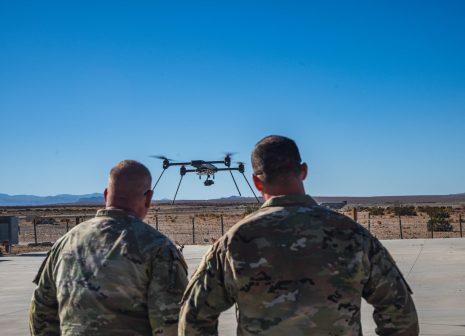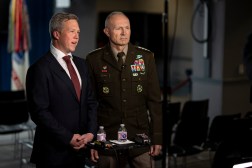In line with Army transformation efforts, CIO looks to streamline business systems and push automation

As the Army seeks to continue its transformation effort to become more efficient, the department’s chief information officer is looking to streamline systems and processes. And no longer will “that’s the way it’s always been done” be an acceptable justification for maintaining the status quo.
There have been directives from top levels of Army leadership to cut down on business systems and automate capabilities where possible.
“It’s a big push right now from the secretary and the chief is, hey, do we need all of these systems, why do we have them?” CIO Leonel Garciga said during a presentation Wednesday at the Potomac Officers Club’s Army Summit. “A lot of it is a process. Lot of it is, ‘we’ve had it for the last two decades, sir.’ Some of it is really old.”
Unveiled at the end of April, the Army Transformation Initiative is a top-down effort to improve how the service operates by shrinking headquarters elements, becoming leaner, slashing programs that aren’t efficient and changing how money is spent.
The goal is to cut obsolete programs and systems that don’t contribute to success on the modern battlefield.
“The Army is trying to change as fast as we are seeing the operational environment change as well as the technological environment change. Army Transformation Initiative is actually our response to that and how can we go about doing that,” Lt. Gen. Karl Gingrich, deputy chief of staff, G-8, said at Wednesday’s summit. “You’re going to start to see what we are trying to do and how we are trying to move faster to respond to that operational environment. No longer can we wait for the next [Program Objective Memorandum], for the next budget cycle. We have to be able to change now and change at the pace that is required of us as a force … It’s also about structure, and what we’re trying to do is eliminate waste and obsolete programs. You’re going to see a lot of different change inside of our equipping programs. You’re going to see a lot of different change inside of our force structure. We’re paying for this, largely, mostly ourselves.”
Garciga noted that for him as CIO, ATI means rethinking the way they deliver capability across the board, but officials are still working through that.
Secretary Dan Driscoll and Chief of Staff Gen. Randy George have both asserted that the Army wants to buy commercial where possible and try to get out of the paradigm of developing long-yielding programs of record — all in an effort to speed capability to field.
“The model is going to change and I think that’s — I keep stressing this idea of our traditional model of full stack, bespoke capabilities, just going to tell you that’s pretty much dead,” Garciga said. “There’s very few areas where it’s like, yeah, that makes a lot of sense, we should probably do that. Almost holistically, across the board, as we triage just functions that are happening across the enterprise, more and more, what we’re seeing is, hey, we can just do this here, let’s go get that done. Starting to think about what that model looks like, it’s really, really important.”
Garciga also noted that the undersecretary recently signed a memo directing major Army organizations to submit three human-intensive processes to the CIO to focus on how to either automate them, augment them with artificial intelligence or machine learning, or get rid of them entirely.
“Lots of cuts, dynamic workforce shaping, it’s a little different right now. How do we make up for some of those losses and still provide capability and take this opportunity to actually relook and rethink things that we’re doing in the Army right now to deliver capabilities?” Garciga said. “I think this is really important, long time overdue. It really took the stress on the system to get really serious about, oh my god, we still have to do the mission, how do we really look at doing this more efficiently? Big push, so next 20 days, we’re going to see a lot of churn on that.”
These new initiatives could provide big opportunities for the defense industrial base to support the Army, Garciga said, charging audience members to start thinking about how their organizations can contribute.
Members of Congress, on a bipartisan and bicameral basis, have been frustrated so far with the Army regarding the rollout of the broader transformation initiative. While there has been widespread support for the underlying notion of the effort, service leaders have yet to transmit any documents related to ATI, to include analysis for how the decisions to cut programs were made, or how officials will make funding and program decisions in the future.
Army Secretary Dan Driscoll told the Senate Appropriations Subcommittee on Defense earlier this week that in the next 10 days, lawmakers can expect to see documentation.






